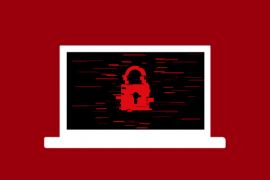Managing Remote Technology in Winter
Views, News & more

Santa's nearly here.
For some that means mince pies, presents and watching Only Fools and Horses in front of a roaring fire. Bless. For you, it might mean fielding tech calls and helping those remote workers home for the holidays log on and get their word done. Here's how to make remote woroking go fuss-freee this festive period.
The benefits of allowing remote working in winter (and, indeed, the rest of the year), are pretty clear:
-
Less disruption - train strikes? Pah, allow your staff to work from home or nearby so everything can continue as normal
-
Save money - temporarily ‘shutting’ your office over the colder months while your staff work remotely can cut your energy bills
-
Effective business continuity - should you be hit by a flood, fire or other unexpected event, allowing staff to work away from the office means you don’t have to suspend your business while you deal with the problem (read our post on how to write an effectibe business continuity plan here)
And yet, as with most things, there are upsides and downsides. As an IT manager, your Christmas might not be spent enjoying the benefits flexible working brings; rather, you might have to spend time ensuring the technologies your company uses for remote working (anything from Skype to Google Hangouts to Buffer to Basecamp to Google Drive) are built to meet the demands of your off-site teams.
Patchy broadband
Not everyone enjoys fast broadband. If you have employees in a so-called internet ‘notspot’, there are things you can do to help. One of the best is to show your workers how to work on documents when they’re offline.
Let’s take Google Drive. Even when not connected to the internet, it’s still possible to create, view and edit files on Docs, Sheets, Slides and Drawings:
-
Connect to the internet
-
In the "Offline" section, check the box
You can also make specific files available offline by:
-
Turning on offline access, as described above
-
Opening the Docs, Sheets or Slides home screen
-
Clicking the ‘More’ button next to the file you want to use offline
-
Clicking available offline
This means that when internet drops out, employees will still be able to work.
Password management
‘What’s my password again?’ was one of the main IT helpdesk gripes we listed in a recent post about frustrating tech queries. But when employees are having to new tools, it’s perfectly permissible to forgive the odd lapse in memory. Let’s say your staff signed up for Skype six months ago but haven’t used it since. To ensure you don’t get a flurry of calls to your team, consider a password management tool that automates the log-in process, making it easy-peasy for staff to log-in to tools and applications and carry on working.
Who you gonna call?
If a mission-critical application goes down over Christmas - a tool you use to deliver work to clients, for example - what would you do? As well as having your own business continuity plan in place, ensure you know who to call should something go wrong. So write down the names and numbers of key contacts for some of the most important, client-facing tools you use. If it all goes belly-up on Christmas Eve, you might just need to pick up the phone.
Protect devices
If employees are going to be using work devices (like laptops and smartphones) at home, make sure they are properly protected and armed to the teeth with programs for doing battle with malware and hackers. Malicious software capable of stealing data can often be passed on via emails or websites, so ensure you’re using up-to-the-minute security software.
Publish a list of common tech faults
You know the known problems with your work applications, but do your employees? To minimise helpdesk calls and help staff enjoy a trouble-free tech time, send out a list of common faults with any tools you use, with instructions on how they can be fixed.
Flexible working has brought a great range of benefits for both businesses and employees. But when it comes to technology, the lack of direct, on-site contact between staff and IT teams can increase the risk of problems occurring - problems that could impact your business. Following these steps will help you minimise them.
Get our free guide to remote working. Just pop your email address in and we’ll send you our resource, which covers:
-
How to give your staff secure access to files and emails
-
How employees can use the work phone system from home
-
How you can make sure your staff are doing what they’re supposed to (wink wink)
Get in touch
020 7847 4510
We may process your personal information in order to send you information you request, measure and improve our marketing campaigns, and further our legitimate interests. For further details, see our privacy policy.
Contact us
-
- Head Office:
- hSo, 50 Leman Street, London, E1 8HQ
- Switchboard:
- 020 7847 4500
- Support (24x7):
- 0333 200 3337
- support@hso.co.uk
- Marketing & Sales:
- 020 7847 4510
- info@hso.co.uk

















